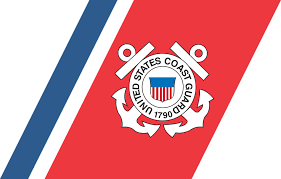Lower Mississippi River (LMR) Dredging Update 12419
The Corps of Engineers Mississippi Valley New Orleans (MVN) continues dredging operations in response to record shoaling deposited by historic long-term high river stages (record flood event created by record precipitation levels). The MVN is nearing completion of the effort to recover authorized channel dimensions on the Crossings Above New Orleans. The Corps has released one of the three dustpan dredges on the Crossings and plans are for the other two to be released by mid-December (2019).
DUSTPAN DREDGE(S) ON THE CROSSINGS ABOVE NEW ORLEANS:
HURLEY: The Corps dustpan dredge HURLEY has completed dredging full channel dimensions (500 feet by 45 feet) at Red Eye Crossing (Mile 224 Above Head of Passes [AHP]). The government dustpan dredge completed dredging on the Crossings and has now been released to return to the Memphis District. The HURLEY dredged on the Crossings from May 4, 2019 to December 4, 2019 (today).
WALLCE McGEORGE: The industry dustpan dredge WALLCE McGEORGE continues dredging full channel dimensions at Medora Crossing (Mile 212 AHP). The industry dustpan dredge commenced dredging on the Crossings on May 9, 2019.
JADWIN: The Corps dustpan dredge continues dredging full channel dimensions at Granada Crossing (Mile 205 AHP) and is expected to move upriver to Medora Crossing (Mile 212 AHP) tomorrow (December 5, 2019). The government dustpan dredge commenced dredging on the Crossings on June 27, 2019.
CUTTERHEAD DREDGE(S) IN THE HOPPER DREDGE DISPOSAL AREA (HDDA):
J.S. CHATRY: The J.S. CHATRY continues dredging on the HDDA contract, all material is being beneficially used in the Pass A Loutre Wildlife Management Area (PALWMA). The MVN was able to extend this contract from 12 million cubic yards (mcy) of material to 15.075 mcy to be removed from the HDDA with supplemental funding. The cutterhead dredges have now beneficially utilized approximately 11.25 mcy of material from the HDDA and restored approximately 900 acres. When this project is completed in early 2020, approximately 1,200 acres will have been recreated in the PALWMA.
The Carrollton Gauge (New Orleans) reading at 1000 hourstoday was 7.51 feet, with a 24-hour change of + 0.10 feet.
The graph below is reproduced from NOAA’s National Weather Service website and represents an experimental product to account for the complexity of accurately predicting long-range precipitation. This forecast projects stage levels based on expected precipitation for 2 days (top) and 16 days (bottom) and was developed within the North American Ensemble Forecast System (NAEFS) computer model and highlights Quantitative Precipitation Forecasts (QPF). Along with the forecasts, a shaded area is also provided to indicate uncertainty for the forecast each day in the future. These plots are experimental and not an official forecast product.


